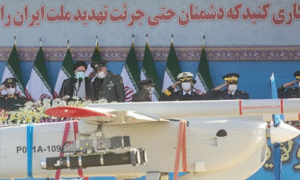#Afghanistan #Taliban #CrudeOil #ChinaInvestment #AmuDaryaBasin #GlobalEnergy #EconomicGrowth #Geopolitics
Afghanistan’s economy has experienced a remarkable boost in its crude oil sales under the Taliban regime, recording sales of $80 million in just 10 days. This notable increase in oil revenue is a significant development for the country, which has historically been more known for its geopolitical challenges than its natural resource wealth. The sales were largely driven by an initial investment from China’s CAPEIC (Xinjiang Central Asia Petroleum and Gas Co.), which amounted to $49 million, aimed at enhancing Afghanistan’s crude oil output. This investment has propelled the country’s daily crude oil production to over 8,000 barrels per day (bpd), marking a substantial stride towards economic self-sufficiency and a significant departure from its previous reliance on oil imports from neighboring countries including Iran and Uzbekistan.
The Amu Darya basin, a vast oil-rich region straddling the border between Afghanistan and Tajikistan, lies at the heart of this recent economic windfall. It is estimated to contain 962 million barrels of crude oil and over 52 thousand billion cubic feet of natural gas. The ambitious collaboration between the Taliban regime and CAPEIC showcases a poignant shift in Afghanistan’s economic landscape, with the latter committing to invest a total of $540 million by 2026. Despite initial delays and investment shortfalls attributed to underestimated material and labor costs, the project has already made significant inroads, with plans to expand production substantially by drilling 22 additional wells in the coming year.
This economic development unfolds against a backdrop of evolving geopolitical dynamics, particularly following the U.S. military withdrawal in 2021. China’s deepening foothold in Afghanistan, evident through its significant investments and frequent diplomatic engagements, signals Beijing’s strategic interest in the region. This interest is not merely economic but also geopolitical, as Afghanistan serves as a critical node in China’s expansive Belt and Road Initiative (BRI). Conversely, the U.S.’s stance towards Afghanistan post-withdrawal focuses more on humanitarian aid than on direct competition with Chinese or Russian interests in the region.
As Afghanistan navigates this complex web of economic and geopolitical changes, the burgeoning crude oil market symbolizes a hopeful avenue for national revenue enhancement and international partnership. Yet, concerns remain regarding the internal security situation, the assurance of stable foreign investments, and the country’s infrastructural challenges. Nonetheless, the progress in the crude oil sector marks a potential turning point for Afghanistan, presenting both opportunities and challenges as it redefines its position on the global stage amidst shifting power dynamics.







Comments are closed.